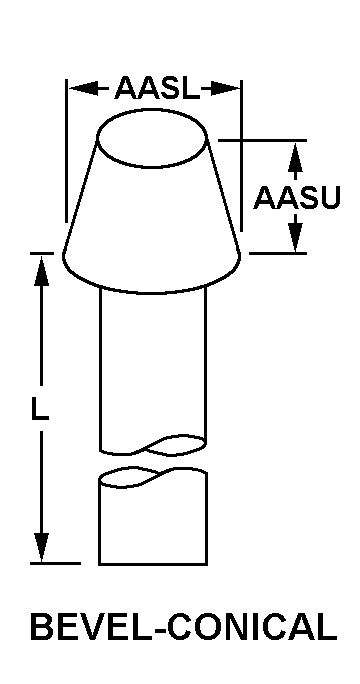5306003487308
Price Quote Get an up to date pricing and availability quote for this product. Order online or over the phone.
Quality Commitment
Serving our customers with quality and safety first.
- AS9120 Certified
- Audited supply chain
- ITAR Registered
- DDTC Registered
- HAZMAT Certified
- Customer service objectives
- Every product 100% inspected

5306-00-348-7308 Specification Set by the OEM (see RNCC code 3)
2a
RIGHT-Hand
0.250in. ⁓1/4"
0.250in. ⁓1/4"
BEVEL-Conical
0.218in. and 0.226in.
0.134in. and 0.138in. ⁓9/64"
hexagon
0.138in. (UTS #6)
0.1094in. and 0.1111in. ⁓1/8"
32
80000 pounds per square inch
steel comp 302 or steel comp 303 or steel comp 304 or steel comp 305 or steel comp 316
66 fed std all material responses
cadmium and chromate
QQ-P-416, ty 2, cl 2 fed spec all treatment responses
98230-CE87446 drawing (this is the basic governing drawing, such as a contractor drawing, original equipment manufacturer drawing, etc.; excludes any specification, standard or other document that may be referenced in a basic governing drawing)
unc
Cross Reference Parts Part numbers that meet the specification outlined on this page and set by the OEM
Identification Item Identification Guide (IIG) and Item Name Code (INC)


Definition Definition of approved item name (AIN): "BOLT,INTERNAL WRENCHING"
An externally threaded fastener whose threaded portion is of one nominal diameter, no. 10 (0.190 in.) (5 mm) or larger. It is designed with an internal socket or internal multiple spline for use with an internal driver. The head is beveled (conical) or cylindrical in shape. Items with cylindrical shaped heads must have an externally relieved body. A locking feature may be incorporated in the design of the head or threads. See also screw, cap, socket head. Excludes setscrew; screw, shoulder; bolt, shoulder; screw, externally relieved body; bolt, externally relieved body; and screw, machine.
5306-00-348-7308 Material Hazmat, Precious Metals, Criticality, Enviroment, and ESD
Indicates there is no data in the hmirs and the nsn is in a fsc not generally suspected of containing hazardous materials.
Item does not contain precious metal.
Represents items with no adp components
The item does not have a nuclear hardened feature or any other critical feature such as tolerance, fit restriction or application.
Identification Codes
HMIC: Hazardous Material Indicator Code. A one position code that identifies a hazardous item.
PMIC: Precious Metal Indicator Code. A one position code which identifies items that have precious metals as part of their content. precious metals are those metals generally considered to be uncommon, highly valuable, and relatively superior in certain properties such as resistance to corrosion and electrical conductivity.
ESD: Electrostatic Discharge. Indicates if an item is susceptible to electrostatic discharge or electromagnetic interference damage. electrostatic discharge damage occurs when an accumulation of static electricity generated by the relative motion or separation of materials is released to another item by direct contact. electromagnetic interference damage occurs when an item comes into proximity with an electrostatic or magnetic field.
ENAC: Enviromental Attribute Code. Identifies items with environmentally preferred characteristics.
CRITL: Criticality Indicator Code. Indicates an item is technically critical by tolerance, fit, application, nuclear hardness properties, or other characteristics.
Material Management Material categorization and source of supply
Us army communications security logistics activity fort huachuca, az 85613-7090
Material Codes
SOS: Source of Supply. A three position code or routing identifier code (ric), which identifies the source of supply activity.
SMIC: Special Material Indicator Code. A two position code, which categorizes material on the basis of requirements for source or quality control, technical design or configuration control, procurement, stocking and issue control, special receipt, inspection, testing, storage, or handling.
MMAC: Material Management Aggregation Code. A two position code that identifies an item of supply to be managed by a specific activity manager.
MCC: Material Echelon Code. A two position code employed by the marine corps in classifying items into categories by materiel category and procurement echelon. the alphanumeric management code is in the first position and identifies the materiel category
IMC: Denotes wether items shall be subjected to integrated management under the defense supply agency or retained by the individual military service or other department of defense components for their management. Assigned by th activity responsible for item management coding.






